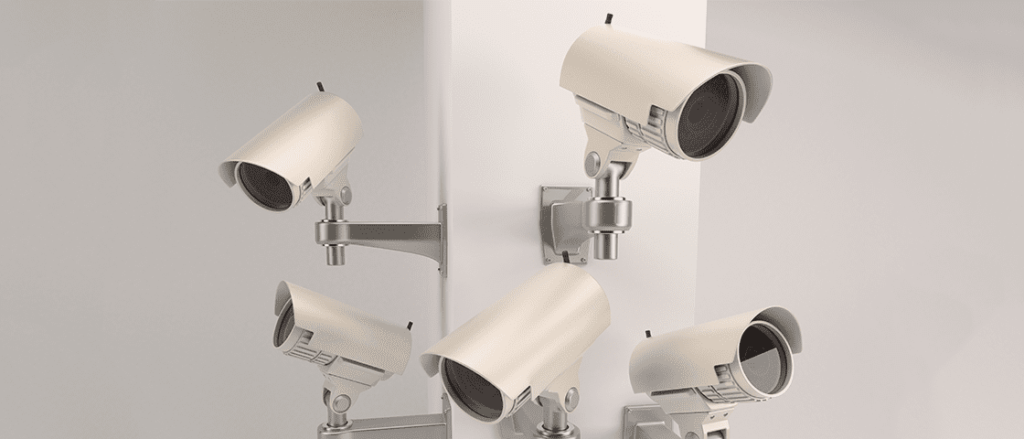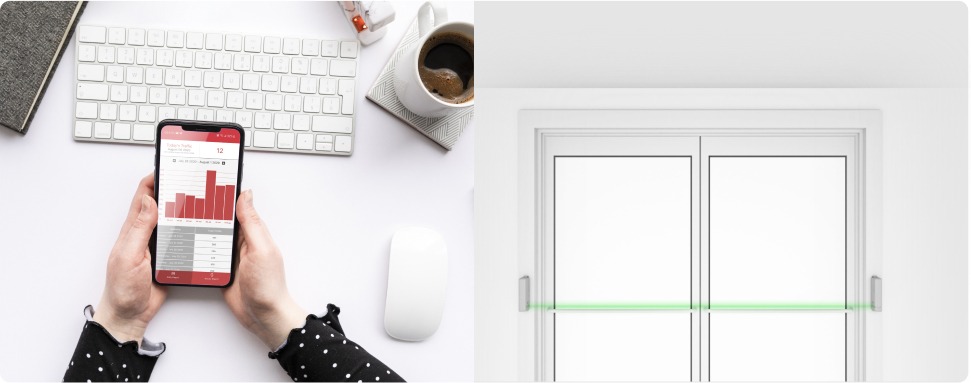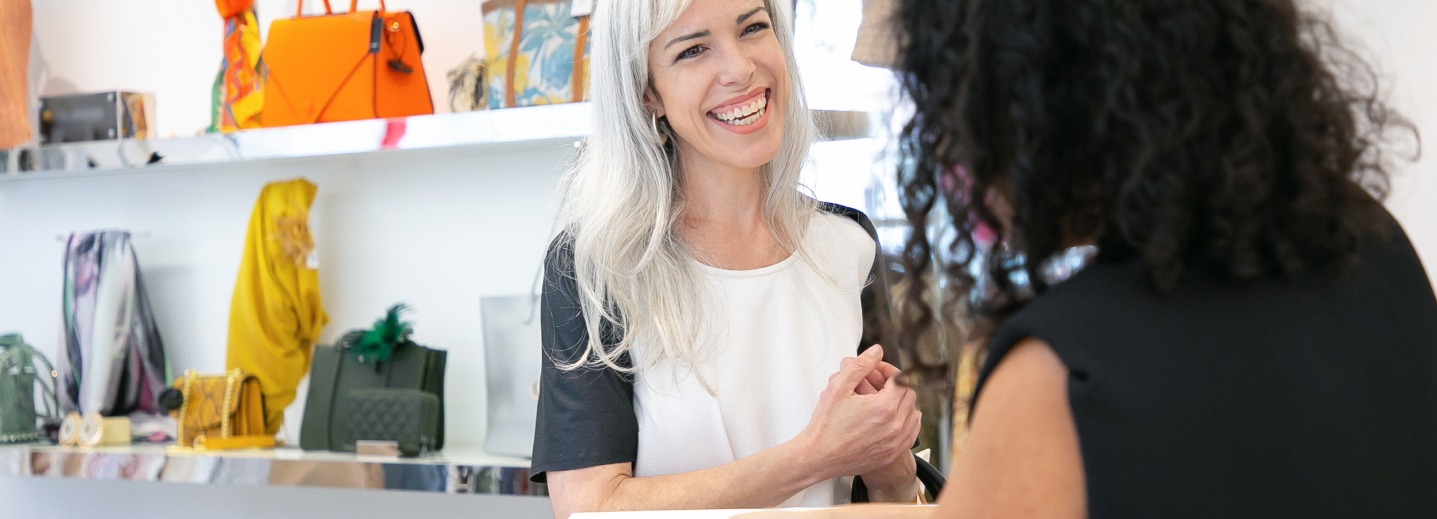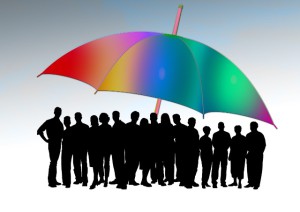
Intelligent People Counting Cameras
As you may have noticed up to now, the technologies we have been going through are reused from their original purpose and were adapted to count people. They all have their limitations. That is what caused smart cameras to appear on the market. Their goal is to count with increased accuracy in different kinds of scenarios. “Back in the days”, which means just a few years ago, these were connected to a collector box such as our STC. They required a laptop using a special calibration tool and a technician to be calibrated and validated. These days they are all IP based which allows for remote calibration and validation. There are many different technologies in this category.
Today there are three distinct camera technologies to capture counts.
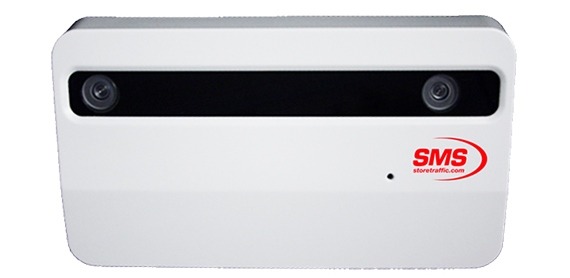
Thought Bubble
What is the difference between a Stereo/3D camera?None.In this industry stereo cameras refers to the fact that two lenses work together to capture the image “depth” and 3D relates to the same process. It becomes a marketing decision. Although other technologies could claim 3D vision , even if they are not using dual video lens.
The Meaning of Intelligent Cameras
I use the term intelligent to indicate that, unlike the previous technologies we discussed, these cameras have software algorithms built in that process the collected images to determine counts. This allows for a great deal of different features and “intelligent” options to ensure better counting in a challenging environment.
These features can include:
- Very high accuracy of 98% plus
- Available for both indoor and outdoor scenarios
- Counting all persons entering or leaving the store, even if they are walking through the entrance at the same time
- Protection from repeated counts from persons staying or shopping around the entrance
- Count modes, such as:
- Filtering out “u-turns” such as a customer coming in the store and leaving right away. This reduces to a minimum multiple counts from the same customer, or from staff walking near the entrance.
- Register one count every time the number line is crossed in the correct direction
- Or counting the person every time they cross the line
- Screening out of objects or children by height measurements or through shape recognition
- Built-in Wi-fi or Bluetooth transceiver to capture cell phone signal for additional features such as capturing time spent in store, identifying repeat customers, or filtering out staff*
Thought Bubble
*As you can see, Bluetooth and Wi-Fi tracking promise interesting features. We do not deny the value of these extra features, but it is wise to put them in perspective with their technical limitations. We are very careful before integrating these features due to all the concerns listed below.
- Bluetooth and Wi-Fi tracking tracks mobile devices, not people
- It can estimate the distance of a target versus the transceiver. It is imperative to understand that this can sometimes lead to substantial inaccuracies even in the best scenario. Take this example, a target being captured as being within your store when it is actually outside your store.
- It is user dependant: Wi-Fi or Bluetooth needs to be active on the device
- It causes some privacy concerns if your customer bases know you are doing this. Although no personal data is recorded, the user can “freak-out” when they hear you are tracking their “cell phone signal”.
As mentioned before, reliability and trust in the data you are receiving is crucial in allowing you to be confident in the decision you take. For that reason, although there can be value in the data provided by beacons/Bluetooth/Wi-Fi tracking we advise caution and in-depth understanding of their limitations. They are neither accurate or reliable as traffic counters.
Advantages & Disadvantages of Intelligent Cameras
Like everything, all the technologies listed above have their pros and cons. Let’s dive a little deeper.
Time of Flight
Just a quick note on Time of flight (ToF) people counting system has just started being used to count in retail scenarios. It has been popularized by its use in the Microsoft Kinect device. The technology measures the time it takes for laser light to bounce of a target. Hence obtaining the height, and then reproduce a 3D image.
The ToF image sensors have the ability to detect the precise shape of a human body and accurately track movements with ridiculously high precision. They have been shown to track even the subtlest of movements. They will also work in completely dark environment.
The technology is new but promises very good accuracy. It is sensitive to sunlight and will not be able to be installed to count outside. The technology being new in our field we are holding back on giving our opinion.
Thermal Cameras
These are manufactured by Irisys in the UK. I know of no one else who counts traffic using thermal imaging. Innovative in their design, the camera tracks a person based on the change of temperature versus the floor and the person is seen as a thermal “blob”.
It is an excellent technology that keeps on evolving. Although the way it works would point to a weakness with entrances leading to the outside, where the significant variation of temperature could occur, I have rarely seen this happen and be confirmed. Irisys has improved significantly in its ability to counter those occurrences.
The technology is capable of 95% plus accuracy, as it can count multiple people entering at the same time, filter out U-turns, can count in very dark areas, count outdoors, etc.
One of the potential weakness is related to a target standing still. If a target stands VERY still for a few seconds (3 or more), then it could disappear. This is due to the camera continuously refreshing the background temperature, and a person staying very still could then be considered to be part of that “background”. However, once the person moves again, they will be tracked again. This, in exceptional scenarios, could lead to unwanted counts as you could reappear slightly off from where you disappeared. This could be right over the capture line and would record another entry or exit. This is assuming that when you disappeared you had met the conditions to be counted in the first place.
The thermal camera offers different count modes, multiple lines to capture people going in different directions, the ability to count groups*, different capture logic, counts children as well as adults (which for some customers can be a weakness).
Thermal cameras also offers the ability to communicate between them to track very wide units as if it was seen by “one camera”.
As a counter point to this weakness, you never have to worry about lighting conditions or counts created by shadow. The conclusion is a thermal camera that is correctly calibrated is a system you can trust, and it is has unique ability that can make it the BEST for specific scenarios, such as locations or entries with low lighting.
3D/Stereo Cameras

There are many providers of this technology. Hella, Point grey (manufacturer of the Brickstream), Xovis, are some of the well-known names in this field. The technology is based on video analysis, but by using two video lenses, it allows the camera to analyze height information.This makes it more accurate overall than a single lens video camera. It also means it is less sensitive to shadows and sees in “3D”, permitting the filtering of objects or children based on minimum height settings. Some of these cameras are even starting to add advanced shape recognition to allow a greater range of features, such as correctly differentiating adults from children and counting them independently. This is now what we offer with the 3D SCOPE II LC.
In North America, 3D cameras are often referred to as the best available technology, especially for retail.
This is usually true as when compared to thermal cameras they will only fall short if the environment is extremely dark. As for the rest, it does not suffer from the “person disappearing when still” problem, and depending on the manufacturer, provides all the features a thermal camera can provide and more.
As with the thermal camera, stereoscopic camera can also be installed outside, when enclosed in proper protection.
It is a technology that is constantly being improved and in my opinion, the technology to “beat”.
It becomes critical to discuss your needs with your trusted vendor to ensure you choose the best technology and that you do not get lost with all the different features offered.
Thought Bubble: Counting Groups
*In the ever-challenging race of improving conversion rate, some retailers would like their numbers to be as high as possible. In this case, they will find the group mode attractive. What the group mode does is, assume that customers are entering together, or standing near to each other are groups. This allows you to count “shopping units”. The problem is that the calculation is based on the distance between each person, not on the sure knowledge that the persons entering at the same time will act as “one buying unit” and even less that they were shopping together. If you ask my opinion, you should stay clear of this feature, as it is mostly a feel-good feature. I do not question its purpose or goal but more its technical limitation.Not being in the head of the customer to understand their relation to the others entering, makes it arbitrary at best.


